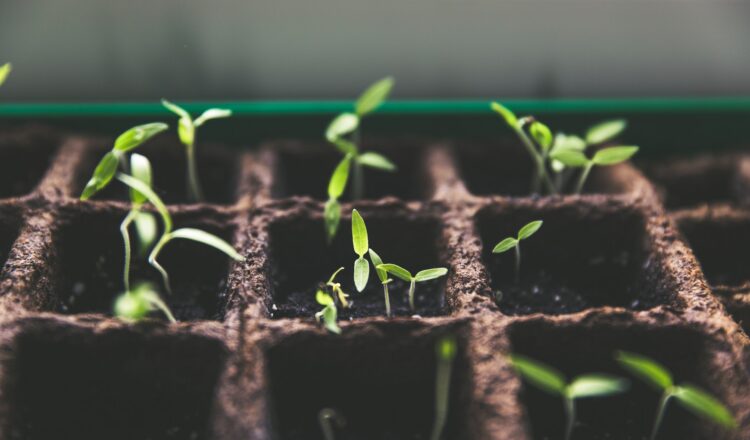By M. L. Wells, Master Gardener Volunteer Cornell Cooperative Extension Allegany County
How early is early? It will soon be time to start thinking about sowing those hardy veggies but how can we gamble with Jack Frost and wind?
Some seeds like peas, spinach, kale and radishes will sprout if the soil is 40 degrees or warmer. The trick is to know when that is. You can’t look at your thermometer or listen to the weather report because that shows air temperature and the soil will be colder. You could buy a ground thermometer or let Mother Nature tell you! The robins will be back from their winter sojourn when the worms start wiggling around in the topsoil and that happens when the ground is about 40 degrees. With global warming they come back in late-March or early-April depending on the year and your garden’s situation.
With early planting in mind, here are a few things you should have done last October. The number one rule in gardening is do not walk or dig in your wet soil! If this is a new garden and you are digging up your lawn, you will have to wait until May when the soil has dried out. To get an early- to mid-April start you needed to prepare your beds last fall. Here’s what you should have done. Raise your rows by (A) moving soil from the paths to the planting bed or (B) adding amendments (topsoil–sand–peat–manure–compost). If possible add a total of one to three inches. Using a spading fork push down six inches and wiggle it around. This loosens the soil but does not invert the layers, disrupting the living creatures which make for a productive soil.
If you are new and have yet to site your garden, consider this–a south-facing slope warms up faster in the spring. Every one degree essentially moves the plot seventy miles south and therefore spring comes three and a half days sooner.
Come early-March, if the snow is gone, rake aside any mulch on your rows so the sun can dry out and warm up your soil. Dark soil (all that added organic matter) will warm up faster and your raised rows will drain faster. Dry soil is warmer soil which means you can plant sooner!
While we are fooling Mother Nature let’s try another trick–soak your seeds for three days before you sow. Here’s how–check the weather forecast for the next three days. You don’t want rain or snow on day three. In the morning of day one soak peas, spinach, kale and radishes in warm water for 24 hours. Then drain, but keep damp, for day two and on day three, sow.
So–do not wait for Memorial Day. These crops love the early, cool weather and will yield well and taste best with daytime temperatures in the 70s. As my Daddy would have said–hop, skip and jump. Do it on time!
P.S. As a reminder, the Master Gardeners are having a free, hands-on workshop in Belmont on how to grow $900 worth of veggies in 10-square-feet (a very small space) this Saturday, March 25, from 11:00 a.m. to 1:00 p.m. To register, please visit https://allegany.cce.cornell.edu/events or contact Cristian Acosta at cfa34@cornell.edu






